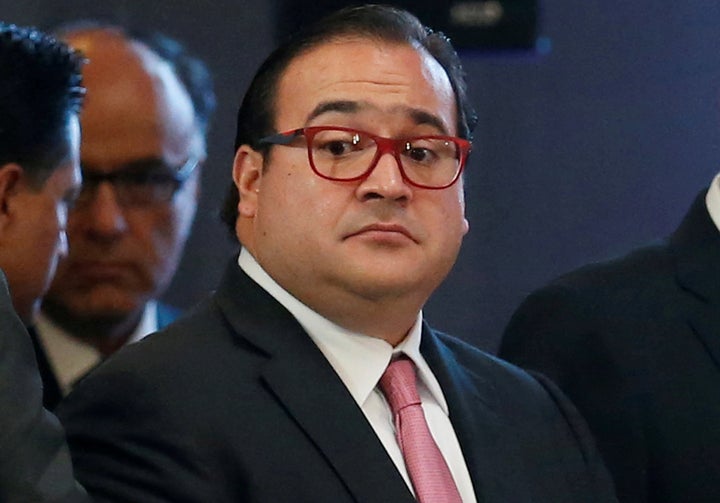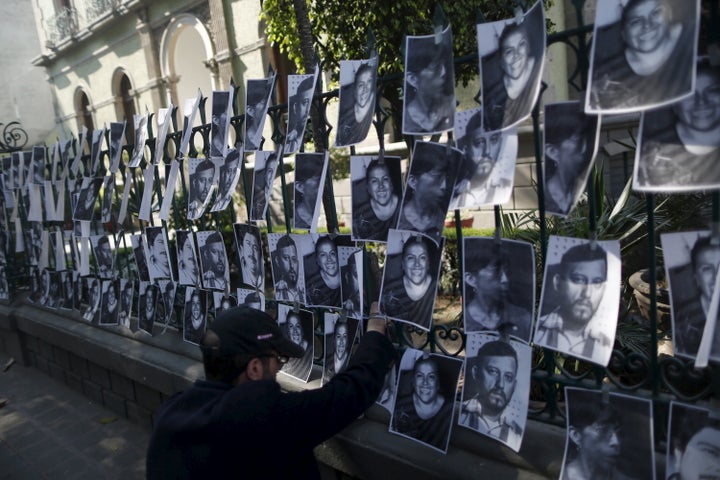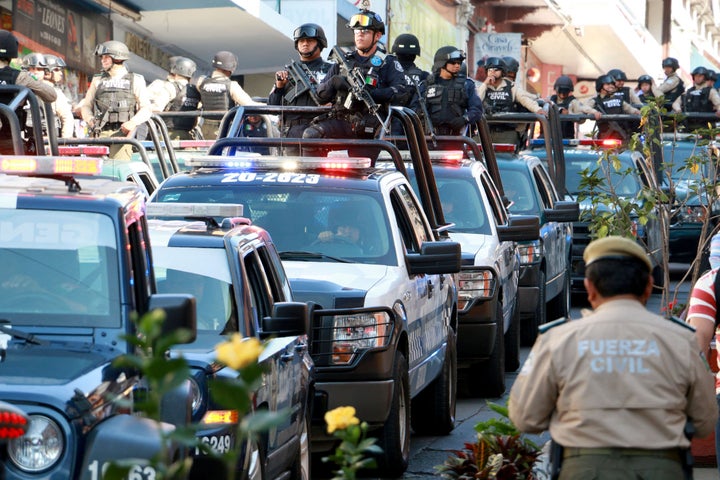Homicide rates in Mexico’s southeastern state of Veracruz have skyrocketed to record levels, and some now call it the country’s biggest mass grave.
In a sobering new report, “Veracruz: Fixing Mexico’s State of Terror,” the International Crisis Group describes the crime- and corruption-plagued region as “emblematic of the challenges facing the country as a whole.” Veracruz has at least 2,750 unresolved disappearance cases, but civil society groups say as many as 20,000 people could be missing.
Just this week, police discovered a note near the tortured bodies of two women and nine men. “You want a war, you’ll get a war,” it reportedly read. Veracruz Gov. Miguel Ángel Yunes Linares said the killings, like more than 70 percent of recent homicide cases, were linked to organized crime gangs.
Veracruz atrocities largely stem from political failures that include ineffective law enforcement strategies, systemic obstruction of justice and a lack of judicial accountability, the International Crisis Group report says.
The recent history of Veracruz, the gruesome details of which are starting to emerge, underlines the crisis not of one state administration but of the Mexican political system as a whole, where a well-intended democratic transition has fallen short of expectations and become corroded by organized crime. The ease with which political power-holders have been able to pursue criminal ambitions points to structural weaknesses in the democratic system.
The rise of organized crime throughout the country reflects Veracruz’s evolution from a base for drug trafficking to a “set of criminal enterprises,” according to the report. Crimes, including extortion and kidnapping, have been on the rise at both the state and federal levels in recent years.
The International Crisis Group calls on the U.S. and other governments to increase pressure on Mexican leaders to address root causes of the nation’s organized crime epidemic, and refocus strategies for resolving the crisis. Support must be directed away from militarization and toward anti-graft efforts, the group explains.
Effective reform in Veracruz will depend strongly on sustained federal support, which seems unlikely. The Mexican government is already grappling with challenges like U.S. President Donald Trump’s proposed import tax and border wall threatening its economy, straining resources to combat organized crime.

Ineffective Government, Rampant Corruption
Veracruz’s transformation from a small hub in Mexico’s criminal economy used by drug cartels into an increasingly dangerous region plagued by record violence is becoming clearer with mounting evidence of grisly brutalities and deep-seated corruption.
Violent crimes in the state surged as more criminal groups pushed in after the election of Javier Duarte Ochoa, an unpopular governor who came into office in late 2010. There were 3,208 homicides logged in the first four years of his term ― an alarming jump from 1,848 during his predecessor’s first four years.
In fact, Veracruz had record homicide levels during Duarte’s time as governor.
Duarte has been declared a fugitive criminal since resigning six years into his term over allegations that linked him to embezzlement, drug cartels and the murders of several journalists.
Under his leadership, widespread state-criminal collusion and impunity gripped the region, undermining the legitimacy of the Mexican government at all levels. A whirlwind of killings targeted legal professionals, police officers, crime witnesses and others who dared to challenge criminal institutions and their suspected political accomplices.

At least 17 journalists were killed in Veracruz ― one of the most dangerous places to be a reporter in all of Latin America ― and others went missing while Duarte was governor. Many had covered local crime and violence extensively. Duarte ruled the state “with the intent of hiding or denying these crimes, and assuring their culprits a free rein,” the International Crisis Group reports.
The state’s violent and sometimes deadly oppression of the press is not an isolated case in Mexico. The country is ranked 149 out of 181 countries in terms of press freedom, according to Reporters Without Borders. The group describes Mexico as “the Western Hemisphere’s deadliest country for the media.”
“In Veracruz, an alliance between criminal groups and the highest levels of local political power paved the way to an unbridled campaign of violence.”
- The International Crisis Group
Abuse of power in the state became so rampant under Duarte’s leadership that an initiative called the Veracruz Truth Commission was created following his resignation to foster new standards for accountability and civil society engagement in criminal investigation and prosecution.
Duarte’s legacy of corruption illustrates a trend throughout Mexico. State governors are among the country’s least reputable public authorities, the International Crisis Group says. Eleven governors have been investigated since 2010 for corruption, including fraud, money laundering, nepotism and links to drug cartels.

The Failure Of Militarization
Duarte came into power amid a major shift in law enforcement strategies to eradicate organized crime. In 2007, then-President Felipe Calderón mobilized tens of thousands of troops in an escalated effort to crush drug cartel operations.
In Veracruz, like in the rest of the nation, the shift toward aggressive militarization dramatically backfired, the International Crisis Group notes, inciting more violence and inflaming the conflict rather than curbing it.
The state has endured a stunning spike in violence and crime-related killings since the start of the military-led campaign. In July 2016, monthly homicide numbers reached 132 for the first time in recorded history.
The gruesome trend appeared on the national level as well. During the same month, there were 1,842 preliminary inquiries for homicide ― the highest monthly figure since President Enrique Peña Nieto was elected in 2012.
A recent report from the Belisario Domínguez Institute recalls that Mexicans enjoyed “historic lows” in homicide near the end of 2006. National homicide numbers tripled from 2007 to 2011.
“It was after the start of the permanent [military] operations that a real epidemic of violence occurred at a national level,” the report notes.
Mexico’s militarized enforcement also came with a startling rise in human rights abuses by law enforcement. From 2006 to 2011, complaints filed with Mexico’s National Human Rights Commission against the National Defense Ministry, or SEDENA, jumped from 182 to 1,626, peaking in 2009 at 1,800.
This military strategy was implemented without coordination or approval from local or regional authorities, leaving them susceptible to criminal influence, the International Crisis Group report explains. “Lacking equipment and training, many local and state authorities regarded confronting organized crime groups as impossible and outside their mandate.”
Narciso Peña Cortés, Veracruz’s current under-secretary for operations in public security, echoed that sentiment and highlighted the risks of militarization in the region and nationwide.
“The armed forces do not have the necessary sensitivity to deal with citizens,” he told the International Crisis Group. “We are made to destroy the enemy.”
Yunes became Veracruz governor in December 2016, after Duarte fled the state, ending more than eight decades of leadership by the Institutional Revolutionary Party, or PRI. He vowed to prosecute culprits in Veracruz and dispel thousands of untrustworthy law enforcement officers. But his first 10 days in office were marred by 40 killings tied to organized crime ― half allegedly committed by Veracruz state forces.
Yunes’ two-year mandate to reform Veracruz’s ineffective civic institutions has little chance of success because the state is facing bankruptcy and stands to receive little federal support from the PRI.
The U.S. has devoted billions of dollars in support for Mexico’s intensified crackdown on organized crime since 2008, but much of this funding has been used to purchase military equipment for security forces.
